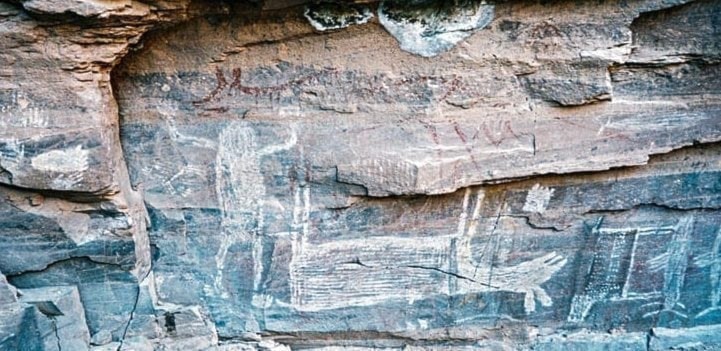by John Holman
Evolution, growth and progress we see every day, or as the adage goes: Change is constant.
For us, our ancestors emulated the hunt, ritual and war, in caves. Going back at least 35,000 years, we see murals on cave walls. I can only imagine even more ancient art sunken into the seas around the world, as artifacts and structures dating back hundreds of thousands, are now being regularly discovered. And by that, I mean the cave dwellers of their day may have left an unseen legacy of our earliest human history.
Contextualizing and depicting figures of subsistence in a cave painting, however, are much different than executing the codified and grand works of ancient Egypt, or are they? What was different was the religious influence going into the extensive dead Egyptian alphabet, as well as the mathematical illumination of their grand works. All great civilizations of the Old Worlds have fallen, in effect, leaving behind their art and mathematics, which was mainly incorporated into their daily lives.
The interior designs of the homes to the upper crust families in Pompeii, for example, often captured classical pastorals or gods on their house walls. They did not hang art up, they painted the entire wall, which is a far different approach to art than today's constrained objectification of framing paintings and hanging them.
So, art may remain the same as an emulation of observation, but the context of its display has changed. In Fort Simpson, Woodland Style adherent and Art instructor, Joseph Purcell is delivering a sign-making and digital enhancement of culture program at the Aurora College Community Learning Centre. Content includes a review of art history, a review of artistic influences and collage design, all with a view to completing a four-foot by eight-foot mural on plywood for public consumption and display.

In Joseph's teaching, art is really a product of the medium and the styles must reflect the artist's unique vision. That is, practicing competencies and skills is fine, but the idea is to communicate a personal touch in the execution of the art itself.
Gestural drawings, extensive art history review, acrylic tests, sketches and figurative techniques make up a large part of the course, but soon to come will be the digital enhancement portion for the last eight weeks of the course, ending in mid-December. The first eight weeks are the analogue painting and artistic pursuits, including putting together the murals – framed on the rear, primed in oil paint and then second-primed in acrylic, these will form the basis of each art student's work.
As one of the students, I mainly have cartooned my whole life, as anyone who knows me is aware, or who has taken a look at my quantum mechanical illustrations of fluid dynamics. Using pens, coloured markers and pencils, I have pursued this mathematical hobby since at least 2009 and made great strides from a non-physicist's understanding of physics, to comprehending diamond formation deep within the Earth, as well as the transition of water from gaseous to liquid to a solid state (including a compressed ice state, which science understands as superfluidity). The outcomes demonstrated physical constants, planes of motion and lateral algorithms of fluid dynamics.
Now, I did study mathematics, physics, chemistry and (some) astrodynamics last year at the Aurora College Community Learning Centre, so that I was able to apply that learning to comprehend my own graphic contemplation on quantum mechanics instantly and was able to explicate them in a plain language fashion. However, most of the mathematical learnings I had first inherently learned in a non-quantitative manner by cartooning the fluid dynamics, not by doing the equations.
The idea of art as an emulation of life is captured within this project, but; on a personal basis, art itself is its own evolution. That is, using simple cartooning to graph changes in fluid dynamics was a means to understanding – for me – but in the end, underscored my own evolution. That is, I had to take Math 30 three times to barely pass in high school and then later in life, easily proceeded into polynomial graphing, calculus and reactive equations, as an adult.
The point is, I made massive strides in mathematical competency, but it was not based on numbers and equations, but cartooning, or if I may humbly say, art. Of course, that is non-quanta illustration of quantum mechanics.
Now, we have cultural aspects to consider in the art course and we will showcase our Dehcho people, history and land. The idea of enhancement, though, with the digital applications, is what will generate the most returns in graphic arts. For me, this will be a stepping stone to graphic design and ultimately, the foundation for beginning to preserve our culture online. Why? Because so many of our people here still live it.
